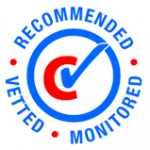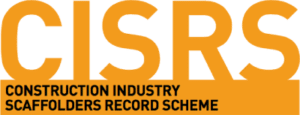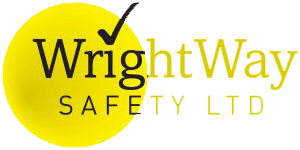To ensure it is safe, scaffolding needs to be checked regularly. We offer initial scaffolding inspections and regular on-site inspections. We have experienced people trained in advanced scaffold inspection. We use the scafftag system. Site inspection is carried out before and after dismantling each building and the site evaluated against health and safety criteria.
We understand that you’ll want your scaffold up and running as long as you need it, so we carry out regular inspections and, where necessary, maintenance. Our safety record is excellent and there’s always an on-site health and safety representative when we work on your site. We’re happy to help you with any scaffolding problems or needs you have.
We Are Also Available to Offer Scaffolding Related Advice
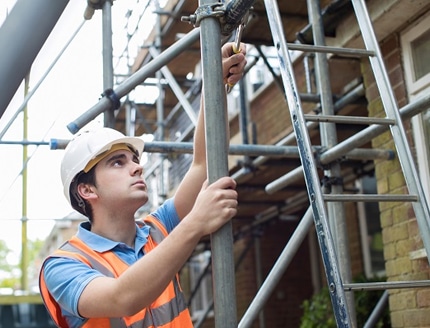
The Basics of a Scaffolding Inspection
Independent statutory scaffold inspections and site scaffolding monitoring services are available in accordance with regulation 12 (7) of the 2005 work at height regulations. Independent scaffolding inspections are the legal responsibility of the scaffolding user and JL Scaffolding Eastbourne provides a support service to perform this key duty on behalf of scaffolding customers in Sussex. The user must ensure that the framework structure is safe, operational and in good condition. Our independent inspectors advise you professionally and impartially on scaffolding standards.
Why Does Scaffolding Have to be Inspected?
scaffolding is an access form that’s used on most construction sites in various ways. Large framed scaffold forms are prominent on sites where they’re utilised. For renovation work, it could be the first sign that a building project has started from the outside.
Working at heights, however, could be highly risky. In 2017/18, there were 35 fatal crashes from height accidents. According to HSE statistics, high-altitude falls accounted for 8% of all RIDDOR non-fatal injuries. HSE tracks all companies (and directors) whose scaffolds are below the required standards.
When Must Scaffold Inspections be Done?
To meet the requirements of the 2005 Working at Heights Standard, scaffolding used for construction should be inspected before first use and every 7 days afterwards until it’s removed. It should be checked every time it’s exposed to conditions that can lead to deterioration, such as after adverse weather conditions or after significant incidents. It’s the responsibility of the renter/user to ensure that the scaffolding has been properly inspected.
Who Should Carry out the Inspection?
The HSE guidelines state that scaffold inspections “should be performed by a proficient person whose combination of training, experience and knowledge is adequate for the scaffold type and complexity.” To be considered competent enough, the CISRS (Construction Industry Scaffolders Record Scheme) qualification is one every scaffold inspector should hold. This qualification is widely held by scaffolding industry stakeholders as the standard for a competent scaffold inspector.
Alternatively, an individual who’s received training in inspecting a specific type of scaffold system from a manufacturer/supplier may inspect a scaffolding based on his or her area of expertise. A non-scaffolding builder who has participated in a scaffolding inspection course (for instance, a site supervisor) may be certified to inspect a basic scaffolding structure.
For each inspection, a written report must be kept on-site until work is completed. After completion of the construction work, the reports should be kept for another three months at an office location. The scaffold inspection report should identify any deficiencies or situations that could pose a risk to health and safety and any corrective action taken, even if such action is taken without delay. This will help identify a recurring problem.
The following information should be included in each scaffolding report:
- Address and name of the person or organization for whom the inspection was carried out
- The inspector’s name and position
- The date, place and time
- A description of the workplace or where the scaffolding equipment was inspected
- Details of any defects or objects discovered during the inspection that could endanger a person’s health or safety and how to remedy them
- Details of other measures deemed necessary.
If you need help or advice on scaffolding inspections, JL Scaffolding Eastbourne can help you. We carry out independent scaffolding inspections, monitor scaffolding activities and audits. We offer a range of scaffold inspection training for inspectors at various levels.
Our Guarantee
- Over Six Years Experience
- Unrivaled Experience
- An Exceptional Service
- Unbeatable Value For Money
- Industry-approved Scaffolders
- A Full Range of scaffolding Services
- Professional, Reliable and Diligent
- 100% Safety and Satisfaction
How Often Should Scaffolding be Inspected?
A work platform like a scaffold can only be used if it has been inspected within the last 7 days. The first inspection will take place as soon as the scaffolding has been erected. This check is usually logged in the form of a handover certificate. Once this inspection has been passed, the scaffold can be used safely. Regular inspections are then required weekly until the scaffolding is removed from the job site.
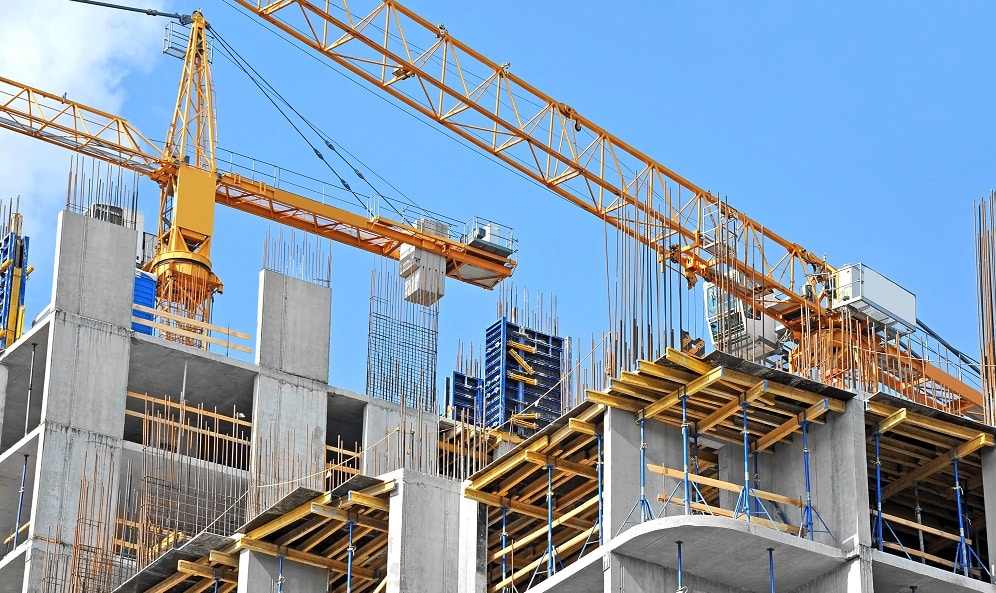
If the scaffolding has not been inspected for more than 7 days, no one may use the scaffolding. You may need additional inspections if, for instance, the scaffolding is changed between inspection dates. You should carry out additional inspections in exceptional circumstances. This can include storms, as high winds are known to damage and even destroy the scaffold.
This may be the case if something affects the scaffolding; a machine or a vehicle for example.
This inspection system should not apply to scaffold alone but to all construction work platforms with the capacity to drop a person over two metres. During the inspection, the various components of the scaffold are examined, including foundations, bracing, crash barriers, and others. Errors in the framework, signs of damage or unauthorised changes are checked for and corrected as soon as possible.
How Often Should a Harness be Inspected?
Three inspection levels are recommended:
Pre-Use Testing
This test is performed by the user at the beginning of each shift to ensure there are no visible or surface defects. Any deficiencies should be reported to your employer.
Detailed Inspection
An officially recorded inspection should be performed at least every six months. However, for frequently used equipment, we recommend increasing this value to at least every three months, especially if the equipment is used in difficult environments such as scaffolding demolition, steel masts/towers with edges, and steel assembly areas.
Interim Inspection
These are detailed, recorded inspections that may be done in addition to pre-use checks and detailed inspections. Interim inspections may require detailed checks because the employer’s risk assessment has identified a risk that could lead to significant deterioration and compromise the lanyard safety before the next detailed inspection is due. The need for and frequency of interim inspections depends on usage. Appropriate examples include hazards arising from harsh environments involving paints, chemicals or sandblasting. Risks from acid or alkaline environments where the nature of the substance from which the compound is made can not be determined are appropriate situations that call for periodic interim inspections.
Scaffolding Types

Who is Responsible for the Scaffold Inspection?
The 1999 Health and Safety Regulation makes it clear that employers must evaluate the risks to the safety and health of their employees and the general public who might be affected by the work. The 2015 Construction Regulation (Design and Administration) requires commercial customers to ensure that their projects are properly managed to ensure the health and safety of all who may be affected by the work, including the public. For domestic customers, the builder, scaffolder or contractor using the scaffolding is responsible for maintaining on-site safety.
Legal Requirements for Scaffold Inspection
- scaffolding must be checked before use and confirmed in the initial test report or in a handover protocol.
- scaffolding must be checked every 7 days.
- scaffolding must be inspected for events that could affect the structure’s safety, such as changes, adverse weather, or an earthquake.
- Inspection reports must be kept in a format that can be reproduced in printable form and protected against loss or tampering.
- The person performing an inspection must, before the end of the working period in which the inspection is completed, prepare a report to be communicated to the client/employer within 24 hours.
- An employer who receives a report must keep it in the location where the inspection was performed until completion of the construction work and then keep it in his or her office for 3 months. However, protection can only be waived for the time and to the extent necessary to gain access to the execution of a particular task and must be replaced as soon as possible. The task may be carried out only if effective compensatory safety measures have been taken.
We Are Also Available to Offer Scaffolding Related Advice
Information to be included in an inspection report include the following:
- The address, as well as the name of the person on whose behalf the inspection was carried out.
- The venue of inspection
- A description check of the scaffold
- The time and date inspection was carried out
- Information about any issue that could lead to an increase in risks to the safety or health of anyone on site.
- Information about an action that was taken after an issue was identified
- Details about any move that is deemed important
- The position, as well as the name of whoever is in charge of the report.
Recommendations by NASC
Some of the recommendations of NASC are
- If an employer can prove that a CISRS Scaffolder cardholder has the right level of experience and knowledge, they’d be considered qualified to inspect scaffold structures, which CISRS Parts 1 and 2 course modules cover.
- If an employer can prove that a CISRS scaffolder has the needed level of experience and knowledge, such scaffolder is considered qualified to inspect any scaffold structure which CISRS Parts 1, 2, and advanced course modules cover. If you are looking to get the contents of CISRS courses, check out CAP 609 General Information Booklet Appendix A-F pages 37-52.
- If an employer can prove that an individual has the right skillset and experience to inspect a basic scaffold structure and such person has gone through the CISRS Basic Scaffold Inspection Training Scheme Course SITS, he or she would be considered qualified to inspect a basic scaffold structure.
- If a person has been on a CISRS Advanced Scaffold Inspection Training Scheme, such individual is considered qualified to carry out inspection of complex scaffold structures if their employer can prove that they have the needed experience and know-how, and successfully passed the knowledge test after course completion. Those who should take part in this course are managers and supervisors who are saddled with the responsibility of inspecting, commissioning, handing over scaffolds, and filling up reports based on the Work at Height Regulations 2005. Experienced scaffold inspectors should also participate in this course.
- A CISRS SITS qualification has a validity period of 5 years. After the expiration of five years, each delegate will need to renew their CISRS SITS card by re-sitting the course. This is the only way to remain qualified inspectors.
- For an individual to inspect system scaffolds, after going throu through the basic scaffold inspection course, he or she needs to obtain knowledge about the system that they’ll be inspecting. One way to achieve this is through the supplier, manufacturer, or through training providers approved by CISRS.
We Are Also Available to Offer Scaffolding Related Advice
Our Emergency and Monitoring Scaffolding Inspections
We carry out both emergency and scheduled scaffolding inspections. We can equally add to the inspection already done, either on the client’s behalf or by the client. Our inspections come with digital photographs and a written report.
Frequently asked questions
Should Scaffolds be inspected every day?
Can Scaffolding be Permanent?
Can Scaffolding be Done in the Rain?
Are Scaffolding Tags Legally Required?
How Many Days does a scaffold tag stay valid after an inspection?
What is the Meaning of a Yellow Scaffold Tag?
Is a License Needed Before a Scaffold Gets Erected?
What Qualifications are needed for scaffolding?
How Long Should Scaffolding Record be on Site?
How Long before One Becomes a Qualified Scaffolder?
Is a Scaffold Handover Certificate Legally Required?
How Long Does Scaffolding Last?
How frequently should equipment for working at Height be inspected?
What is the Weight a Scaffold Can Carry?
What is a Standard in Scaffolding?
Why are Inspections needed on a Mobile Scaffolding Tower?
Get in Touch With us for Your Scaffolding Hire Quotes


